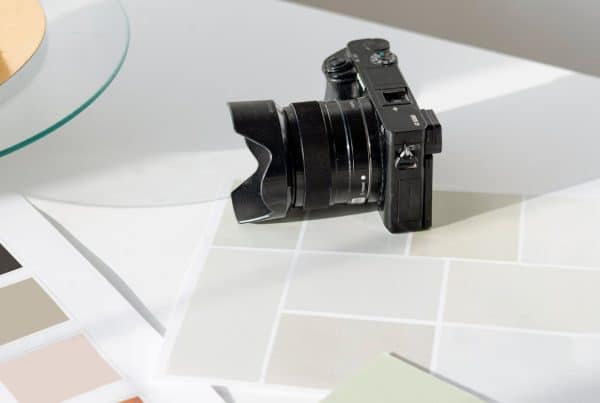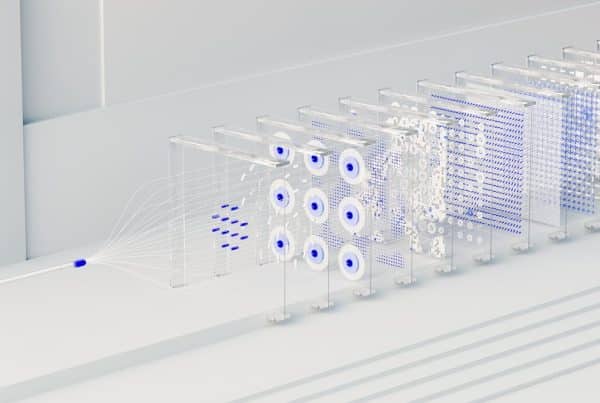Every website should borrow a leaf from Google, a search website that puts its users on a pedestal. Google does its best to deliver exceptional customer experience, so it will only rank your website favorably if its user interface and experience are up to standard. Therefore, how your web design affects user experience is the same way it affects SEO.
Web design affects SEO either by retaining or driving away visitors. Great website designs retain users who may spend time and money on your site. Google and other search engines reward great user experience by ranking your site higher. In contrast, poor web design drives away visitors, negatively impacting your SEO.
In the spirit of unlearning to learn better what I already know, I ventured into Subreddits and other online IT forums for an open conversation. I wanted to know how web design affects SEO; here’s what I found out.
The User Always Comes First
What does Google refer to as the overall page experience? It’s how users perceive interacting with your website.
User-friendly websites load faster and give users an easy time navigating, thus enhancing user experience. According to Google’s latest algorithm update, Core Web Vitals determine the user-friendliness of a site, and they include:
- Loading speed.
- Interactivity.
- Visual stability.
Always optimize your website images, videos, and other content to ensure fast load time. Use efficient coding practices and avoid plug-ins that may slow down your site’s performance.
High Bounce Rates Indicate Poor User Experience
High bounce rates mean that most of your site visitors are in a hurry to leave and don’t even check other pages, interact with your content, or even click any published links.
It suggests that the users didn’t find what they were looking for or they didn’t like what they found.
Search engines are websites with the same goal as any other website: to provide a positive user experience. Therefore, if your site has a high bounce rate, Google and other search engines will stop sending users there.
If I keep sending friends and family to a restaurant with bad food and poor service, they’ll eventually stop trusting my opinion. In the same way, search engines may lose the trust of their users if they continue to send them to websites that aren’t helpful.
What Is SEO in Web Design?
SEO abbreviates the phrase Search Engine Optimization, which refers to tweaking various website and content aspects so search engines can effortlessly crawl, index, and rank your site for relevant keywords. Here’s a basic guide to SEO for beginners.
Web design entails creating attractive, functional, and user-friendly websites. When creating websites, web designers must consider users as well as search engines.
So, is SEO really necessary for a website’s success? Well, you create a website and publish content or products aiming to reach a target audience.
But it’s not as simple as just publishing a few web pages and waiting for folks to discover you. You have to also consider how search engines will find your site and whether they will rank it highly enough for potential customers to see.
Search engines use algorithms to determine a site’s relevance and rank it in search results. Therefore, web designers must deliver functional and aesthetic designs that meet the demands of intended users and search engines.
How SEO Influences Web Design Relate
SEO and web design are complementary disciplines aiming to create a positive user experience. However, they work in different ways to achieve this goal.
Web designers focus on creating attractive and functional websites that users will enjoy navigating. They consider factors like site layout, colors, fonts, and images to make the site visually appealing and easy to use.
SEO experts focus on optimizing various aspects of a website so that it ranks well in search results. They optimize keywords, meta tags, title tags, alt tags, and backlinks to increase a site’s visibility.
Despite their differences, SEO and web design must work together seamlessly to create a successful website. Like myself, the best web designers appreciate the need to incorporate technical SEO in their web design.
So, most agencies couple web design and SEO services for clients. They work together to create a visually appealing website that’s also optimized for search engines.
The Role of Website Development in SEO
Website development plays a significant role in search engine optimization (SEO). A well-designed website with wholesome SEO can increase your site’s visibility, attract more traffic, and improve user experience.
A website with poor design or functionality can hinder its performance in search results. For example, users may feel irked if your website takes too long to load.
Moreover, broken links and pages are even more annoying and cause higher bounce rates. Excellent web design will have permanent redirects; when users click on a broken link, it points them to another relevant page.
Reasons for Web Development in SEOP Services
1. Clean Code and Efficient Programming
Before we get into it, I recommend you learn the differences between web designers vs. web developers.
Website development and SEO converge when it comes to coding and programming. Search engines rank websites based on their crawlability, user experience, and content relevance.
Clean code and efficient programming can improve a site’s crawlability by making it easier for search engine bots to read and index its content.
Moreover, a well-developed website with clean code will load faster, leading to improved user experience. Web dev SEO inputs may include using server-side rendering, minifying code, and optimizing images.
Remember, search engines prioritize fast-loading sites for a better user experience.
2. SEO-Friendly URL Structures
A website’s URL structure plays a significant role in SEO. It is essential to have a clear and descriptive URL that accurately reflects the content on the page.
Avoid using generic URLs with numbers and symbols, as they don’t provide any insight into what the page is about. Instead, use keywords related to the page’s content in your URL to improve its search engine ranking.
Additionally, having an organized and hierarchical URL structure can make it easier for users and crawl bots to navigate your site.
3. Security (HTTPS)
Data is a priceless commodity that must be protected, especially for websites handling sensitive user information.
A secure website protects user data and improves search engine rankings. Search engines prioritize websites with an HTTPS connection over ones that are still using HTTP.
An SSL certificate means your website is safe, so users and search engines can trust your brand.
4. Responsive Design
Another aspect of technical SEO that only web dev skills can sort out is responsive web design. As mobile users increase, search engines now prioritize responsive websites.
With a responsive design, your site can adapt to any device’s screen size, making it user-friendly and accessible across multiple smart devices. It improves the overall user experience, boosting your site’s SEO ranking.
How Web Design Can Enhance Content for SEO
Again, a well-designed website can enhance your content’s SEO. For optimal results, it’s crucial to have an effective collaboration between web design and content creation.
Here are some ways web design can improve your content for SEO:
Visual Appeal
If you present your information on a visually appealing website, users will take more time to soak it in. A sour look will have your web visitors bouncing off faster than a tennis ball.
You want an attractive layout, color scheme, and typography so your site looks professional and trustworthy.
Additionally, incorporate multimedia elements like images and videos in your content to capture and retain more attention. Visual content also makes your posts and pages more shareable, which boosts your SEO.
Establishing Content Hierarchy
The best way to create a proper content hierarchy is via web design. The web designer should have the CMS organize your content so it’s easy for users to navigate and understand the information via elements like:
- Headers.
- Subheadings.
- Bullet points.
- Paragraphs.
- Content categories.
- Content tags.
- Well-structured menu.
These elements help search engines crawl and rank your content.
User-Friendly Navigation
A clear and user-friendly navigation system on your website makes it easier for visitors to find information. Search engine crawlers also depend on it to understand your website’s structure and hierarchy, making indexing and ranking your content easier.
If users can’t find the content or products that interest them on your site, it might be time to find out how much it costs to redesign it.
You deserve and need a well-designed navigation system for your SEO.
Common Web Design Mistakes That Harm SEO
While web design can enhance your content for SEO, certain mistakes can negatively affect your website’s ranking. Here are a few common web design mistakes to avoid:
1. Overusing JavaScript or Flash
Although JavaScript and Flash can make your website look visually appealing, they can also slow down your site’s loading time.
2. Lack of Content Hierarchy
Users and search engine crawlers need to understand how your content is organized. They also need to know which content is more important than the rest; otherwise, essential pages or posts may not get the attention they deserve.
3. Poor Navigation and Sitemap Issues
Again, a clear and user-friendly navigation system is crucial for both users and search engines. If your website’s navigation is confusing or contains broken links, users will be frustrated, and search engines will eventually pick up on that.
4. Unoptimized Images
A picture is worth a thousand words, and images help retain fleeting user attention. However, high-quality images on your site could slow down its loading time. Compress and properly size all images for optimal website performance.
5. Not Working with Jarod Thornton Studios
I’ve been designing, developing, and optimizing websites for over a decade. I appreciate how important a well-designed website is for user experience and SEO.
If you’re hiring a web designer, then you’re looking for someone to bring your vision to life without violating any SEO rules for Google to flood your website with traffic. That means you’re looking for me! My web design and SEO services deliver results, and here are some of my demos.




